
Orca
Orca
Orca
With its adorable appearance and high intelligence, orcas are popular at aquarium shows. However, I have the impression that many of the aliases and nicknames of killer whales are noisy. In fact, it has the nickname "Gang of the Sea", and the scientific name orcinus orca means "monster from the underworld". True to its name, killer whales are a fierce and fearsome species that stands at the top of the ecosystem. Orcas have conflicting elements, but what kind of ecology is they in the wild? Let's take a look at the usual state of killer orcas.
Orca Basic Infomation
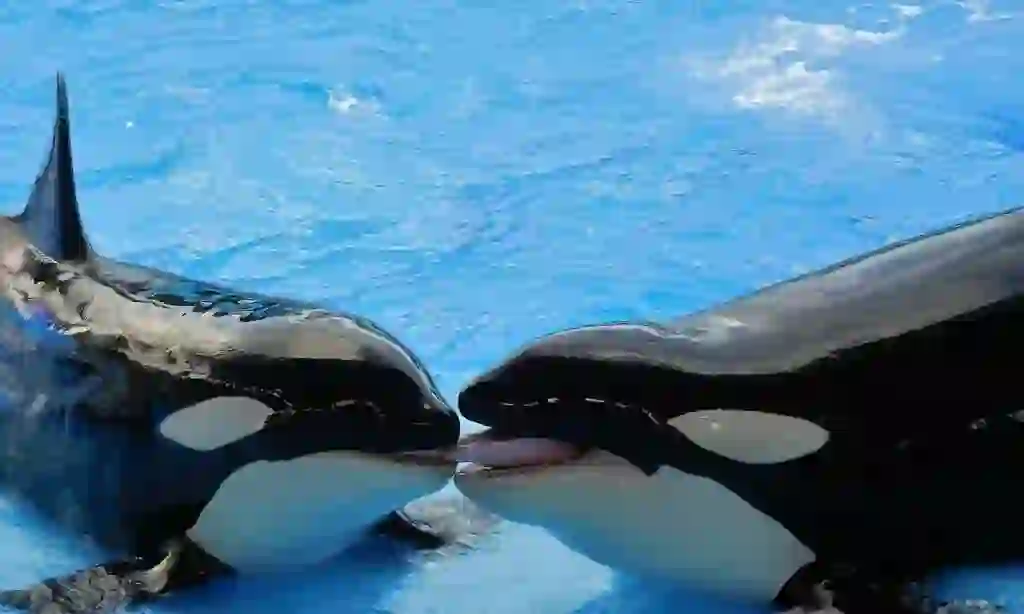
Mammalia-Cetartiodactyla-Delphinidae-Orca genus.
Male:length 5.8〜6.7m weight 3,628〜5,442kg. Female:length 4.9〜5.8m weight 1,361〜3,628kg.
Orcas are said to be the most widely distributed mammals and can be found in oceans around the world, although they prefer cold water.
Although they are currently counted as one species, it is generally accepted that there are three (or four) types based on differences in diet and size. Research on orca species is still ongoing, and it’s exciting to see what conclusions will be reached in the future.
Orcas are generally active in groups and have their own social structure. The way to identify individuals is by the white pattern above their eyes called an “eye patch” or a pattern at the base of their dorsal fin called a “saddle patch”.
The personality is active and curious. They have a habit of swimming more than 100km a day and approaching things they are interested in to check them.
As a characteristic that can be seen in other organisms, it has been found that orcas use two types of sounds. The sound called “call” is used for communication within the group. On the other hand, the sound called “clicks” is a sound wave used for hunting.
It has been found that they can judge what is ahead by emitting it and paralyze their prey by condensing it and releasing it. It seems that their accuracy is very high, such as distinguishing between two threads that are only a few mm apart.
Due to their high intelligence, shows are held all over the world. By the way, in Japan, you can see orca shows only at Kamogawa Sea World and Nagoya Port Aquarium.
Orca Q&A

Is it true that orcas are obedient to humans?
It is not wrong to say that killer whales are said to be friendly to humans. Orcas are very intelligent and appear in shows with humans all over the world.
It is said that they “become attached” to humans by following what humans say, but whether they are obedient or not is another matter. In fact, there have been human fatalities in orca shows. Unfortunately, it is an accident that can happen when dealing with animals.
Humans tend to say “it was just playing,” but only the animal itself knows if that’s really true. Especially since orcas are very intelligent animals.

Is there any meaning in the cute black and white patterns of orcas?
There are several types of black and white animals in nature, with zebras and pandas being famous except for orcas.
They are popular for their lovely appearance, but these colors are said to be protective colors called partition colors.Partition color refers to the body color of an animal that is difficult to recognize as a single organism because its body is divided by a conspicuous pattern.
It seems to stand out very much, but that’s because we’re looking at it with human eyes.It is said that animal eyes cannot feel colors as much as human eyes, and basically it seems to be a black-and-white world.
If you have a body color like an orca in a black-and-white world, you are more likely to be in an advantageous situation as a predator.
The white pattern above the eyes is also called an eye patch and can be said to be synonymous with the lovely appearance of orcas.
The eye patch is also a partition color, and it seems to have the effect of causing prey’s eyes to misrecognize the direction of movement. It is also said to be used to grasp the positional relationship within the group.
For humans, it is treated as a symbol of loveliness, but for orcas, it is an essential function for hunting.
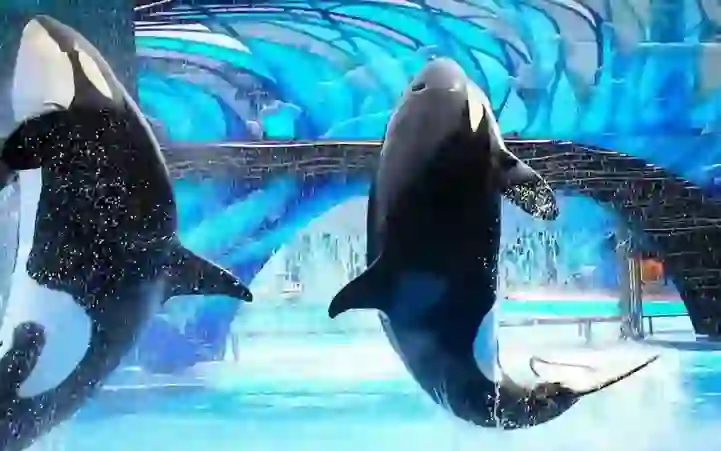
What do orcas eat?
When it comes to orcas, they are known for being ferocious despite their adorable appearance. They are famous for preying on seals. Their appearance of attacking seals by climbing onto ice is so terrifying.
However, since orcas are animals that stand at the top of the marine ecosystem, there are many prey items available to them. They eat fish and birds, and even great white sharks and polar bears are prey items.
Speaking of great white sharks, they are terrifying sharks that became the model for the movie “Jaws” for humans.
For orcas, even great white sharks are just food.It’s surprising that they even attack polar bears which are one of the most ferocious land animals.
However, since orcas inhabit many marine areas, it is said that what they prey on differs depending on the area. It seems that not all orcas prey on great white sharks or polar bears.
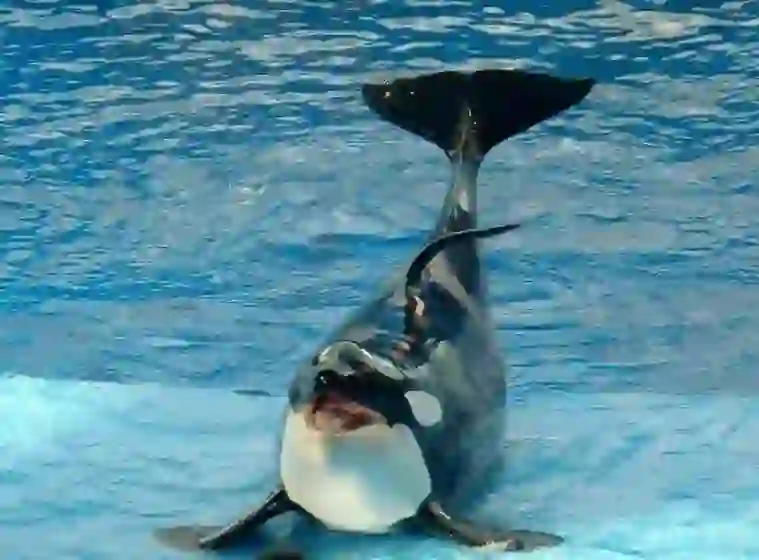
Are orcas really the strongest creatures in the ocean?
In areas orca whales live, it is a well-known fact that they are at the top of the food chain in their ecosystem. However, it is not clear whether they can be called “the strongest” in all seas.
This is because even compared to creatures that they never encounter, it is nothing more than a theoretical fantasy.
Orcas also prey on whales, but whales have a huge body that exceeds 20m. Orcas hunt in groups against whales, but they probably cannot win one-on-one.
It is also known that orcas that prey on sharks have many wounds on their bodies.This is because they are being attacked in return. If sharks are attacked, they will resist, so in some cases killer whales may not be safe either.
The natural ecosystem is very complex and cannot be simply called “the strongest”. However, perhaps that’s why we never lose interest in it.
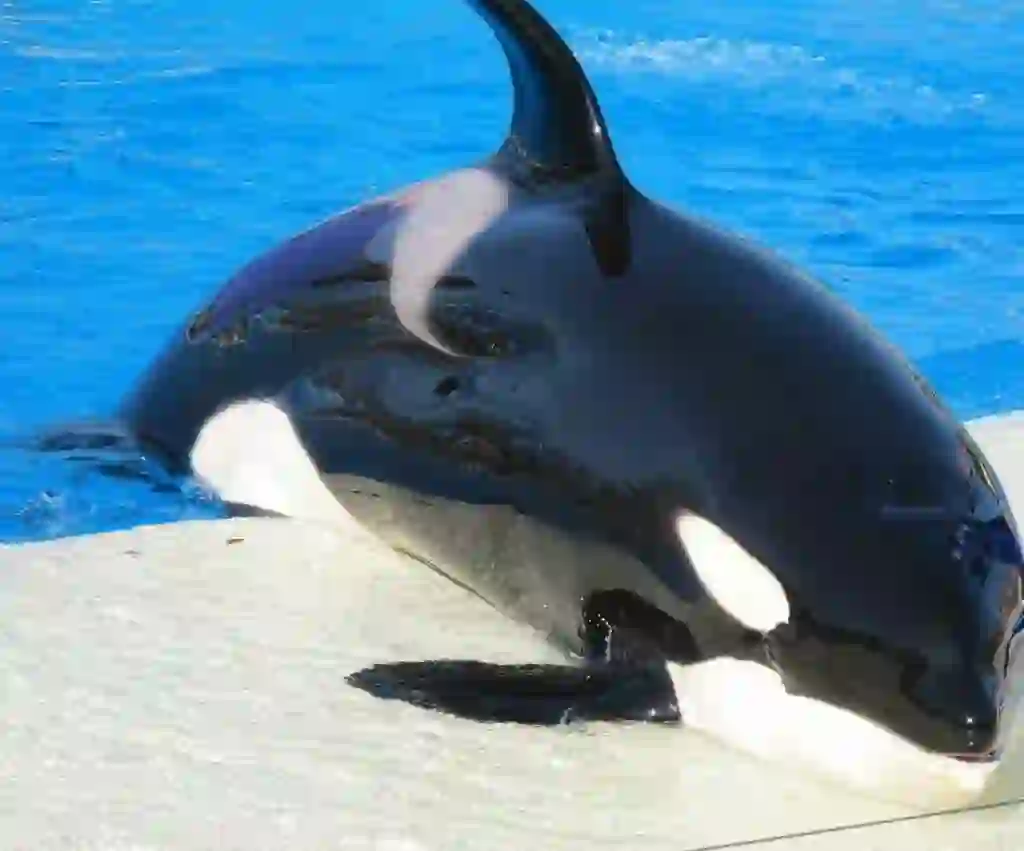
Do orcas have no natural enemies?
Are there any beings that can be called natural enemies in the waters orca whales live? The answer is NO.
In areas where orcas live, they reign at the top of the food chain. Of course, if it is a young or sick individual, it may be preyed upon by a single great white shark. Therefore, if it is a healthy adult, it can be said that there are no natural enemies.
Although it changes the subject a little, if I had to mention one, “humans” could be considered as natural enemies.
Humans who destroy the environment or capture animals for research may be natural enemies for all animals. However, not all humans are like that, so I don’t want to think that all humans are evil.
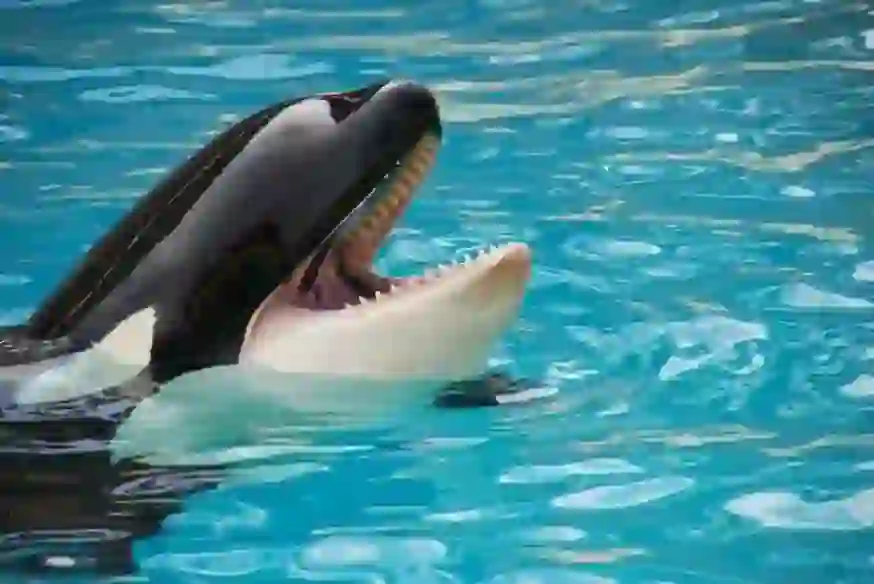
Where does the orca get its name? Is it related to shachihoko?
An animal called "orca" in English and "shachi" in Japanese. Why is it called an shachi in Japanese this time? We will introduce its origin.
In conclusion, the name shachi is said to be derived from the imaginary animal "shachi".
Shachi are fancy animals with a tiger head and a fish body.The shachihoko in the castle tower of Nagoya Castle in Japan is also said to be derived from shachi, and shachi and shachihoko are not unrelated.
Shachihoko was attached to the castle tower of Nagoya Castle as a symbol of strength.
Also, shachi have not always been called shachi. In the old days, it was called "sakamata", and the origin is a weapon called "geki" in China.
The dorsal fin of the shachi looked like a geki, which led to it being called sakamata.
Shachihoko and geki are both symbols of strength. It's the perfect origin for shachi, which are the pinnacle of the ecosystem.
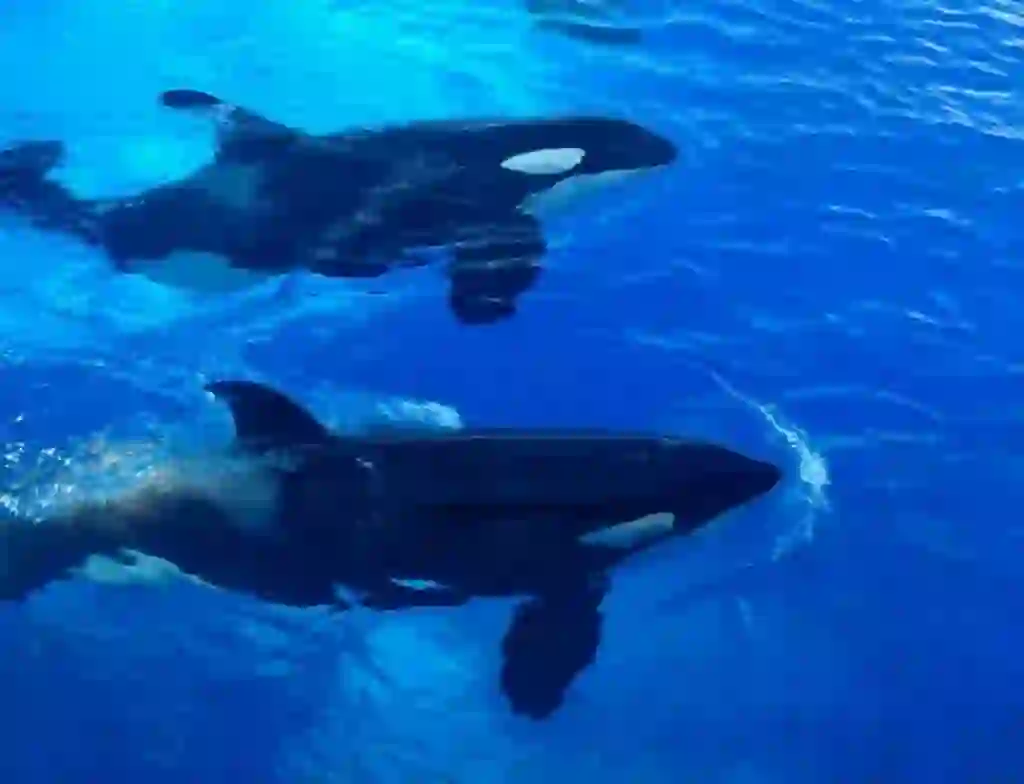
Why are orcas called sea gangs?
Orcas are very intelligent and highly skilled hunters. Their behavior is not much different from that of humans, such as surprise attacks, cooperation, and flanking.
Their weapons are their large bodies and sharp teeth, as well as a sound called clicks. Clicks are not unique to orcas, but they have the effect of paralyzing prey by hitting them with condensed sound waves.
They also attacked sharks swimming near the sea surface from directly below and killed them with a single blow.
In addition, they prey on seagulls that lure them by spitting out fish they put in their mouths, and they hunt seals on ice by repeatedly traveling back and forth under the ice to create waves and drop them into the sea before eating them.
When hunting whales larger than themselves, they climb on top of the whale in groups and interfere with their breathing to suffocate them.
Their hunting behavior is not just about chasing prey but also about hunting after understanding the characteristics of their prey, which can be described as gang-like behavior.
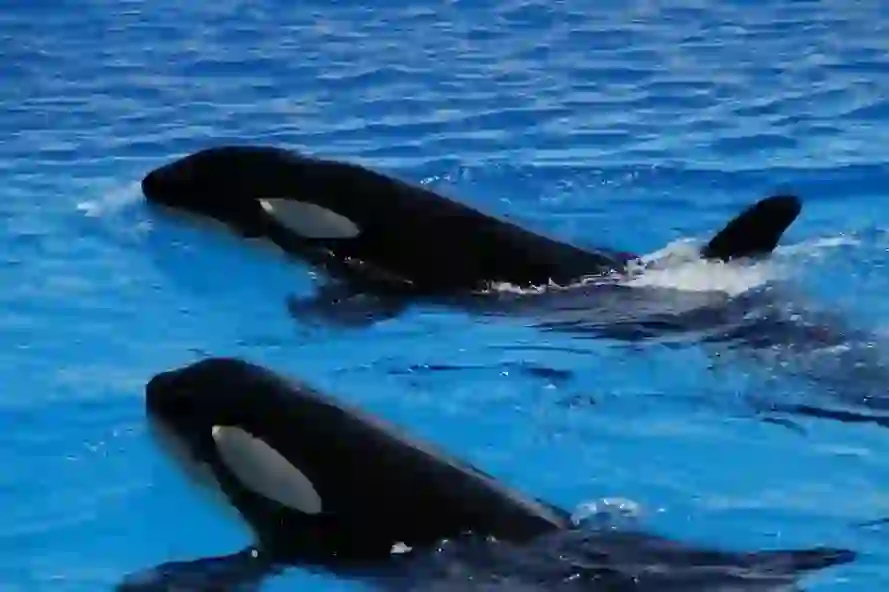
What does it mean that orcas will not be able to have children?
Orcas form groups on a family basis and engage in social activities. Their behavior is very similar to that of humans. In fact, orcas have many similarities with humans in terms of reproduction.
Female orcas start giving birth to children around 14-15 years old and have about 4-6 children throughout their lifetime. Orcas around 30-40 years old go through menopause just like humans do.
In fact, there are only three types of organisms that have a mechanism called menopause: orcas, humans, and pilot whales. They also live for decades after they can no longer give birth, which is similar to humans

Would you like to become a part of the 'Animalbook.jp'?
Turn your knowledge into Q&A and share it with the world. ※Publication will be activated after purchase. Let's share information together!
Orca Type of List

In modern zoology there are no types of orcas, they are divided by type.
In the future, the day may come when it will be divided by a name such as "XX orca".
- Type one:sedentary type
- Type two:migratory type
- Type three:offshore type
Information
Congratulations! You are the first commenter!

Create Your Favorite List!
Orca
Save the animals you love! Build your own list to quickly revisit your favorites later.

Would you like to leave a comment?
※Please note: This is for the purchase of rights to post comments within the article.
Find Your Favorites!
Our shop offers a unique and attractive selection of goods themed around various animals.
Orca References

- Wikipedia https://ja.wikipedia.org/wiki/シャチ
- NATIONAL GEOGRAPHIC https://natgeo.nikkeibp.co.jp/atcl/news/17/071000260/
- Cute Shachi http://tajijujejorenshu2.sitemix.jp/brog7.html
- クジラや深海魚の生態情報をまとめるサイト http://shinkai-fish.com/category10/entry80.html
- 法学部性が語る生き物の世界 http://blog.livedoor.jp/yasu1013orca/archives/1024978294.html
- 古世界の住人 https://ameblo.jp/oldworld/entry-10012657011.html
Orca Introduction of media used

出典:https://pixabay.com/images/id-1263066/

出典:https://pixabay.com/images/id-590038/

出典:https://pixabay.com/images/id-1428530/

出典:https://pixabay.com/images/id-243920/

出典:https://pixabay.com/images/id-1246713/

出典:https://www.pexels.com/ja-jp/photo/34809/

出典:https://pixabay.com/images/id-258745/

出典:https://pixabay.com/images/id-2434070/
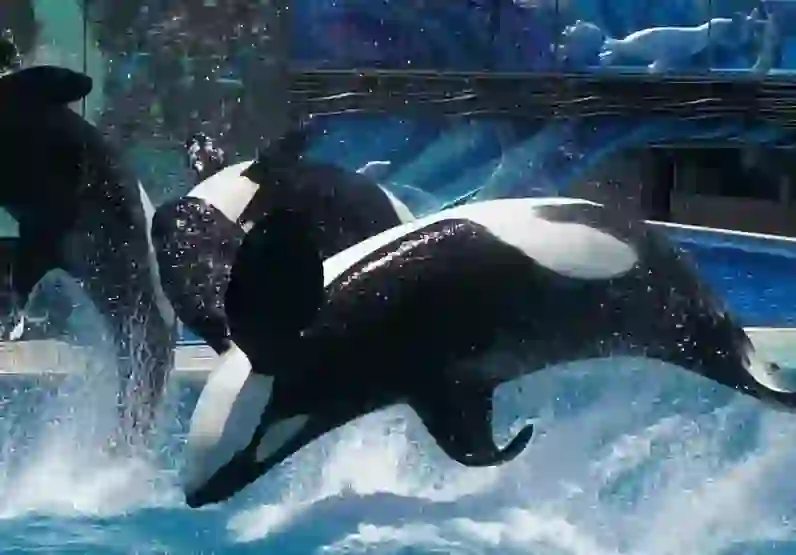
出典:https://pixabay.com/images/id-732242/
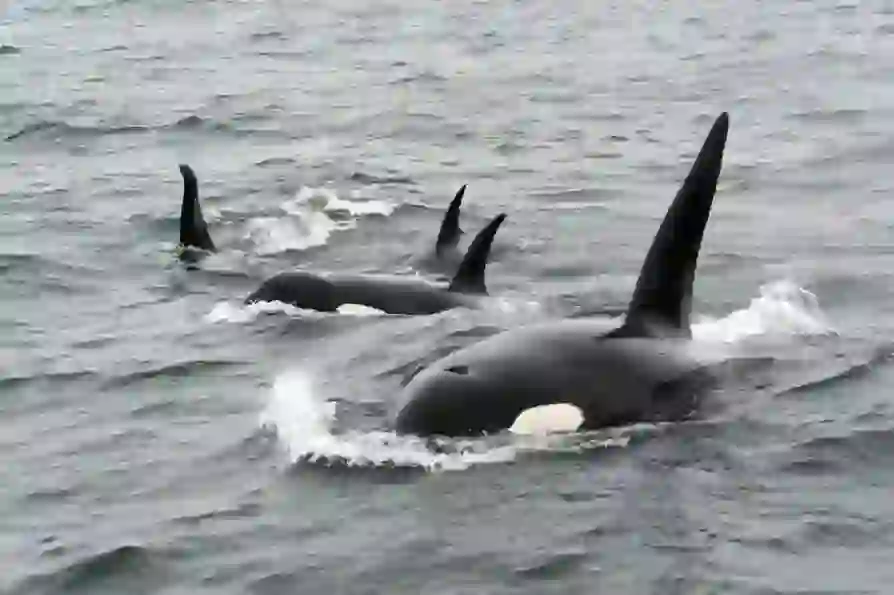
出典:https://unsplash.com/photos/iyVSCp0ZUj0
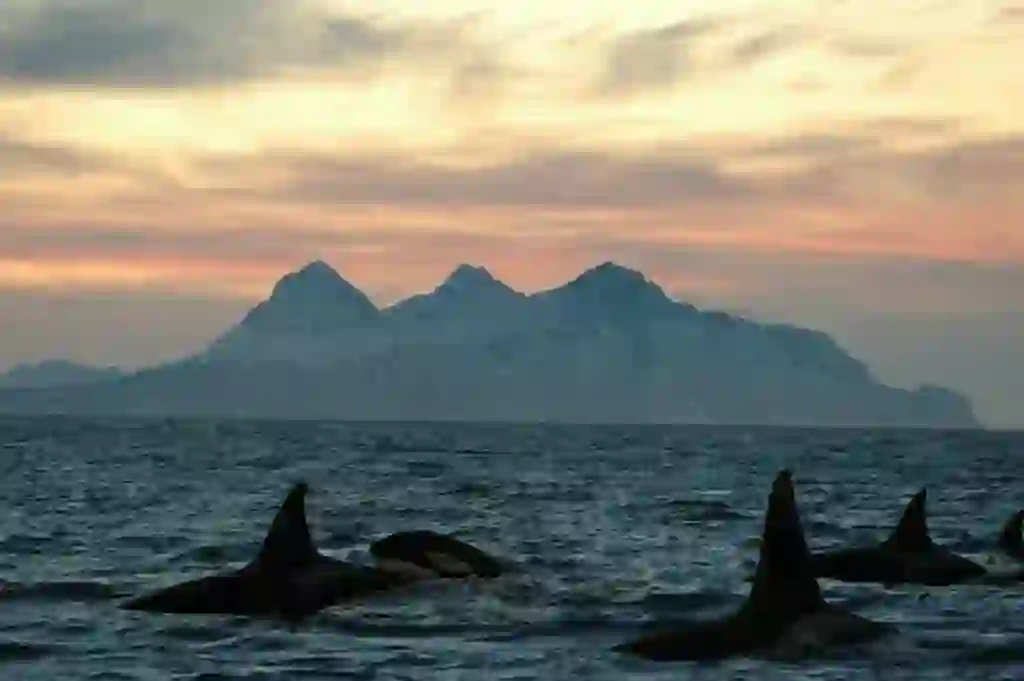
出典:https://pixabay.com/images/id-2358366/

Help Enrich Our Animalbook.jp with Your Media!
We are constantly looking to expand and enrich our Animalbook.jp with amazing photos and videos of animals. If you have any media that you'd like to share, please contribute and help us showcase the beauty and diversity of the animal kingdom. Your submissions will be credited and featured in our encyclopedia, reaching a wide audience of animal lovers.


















